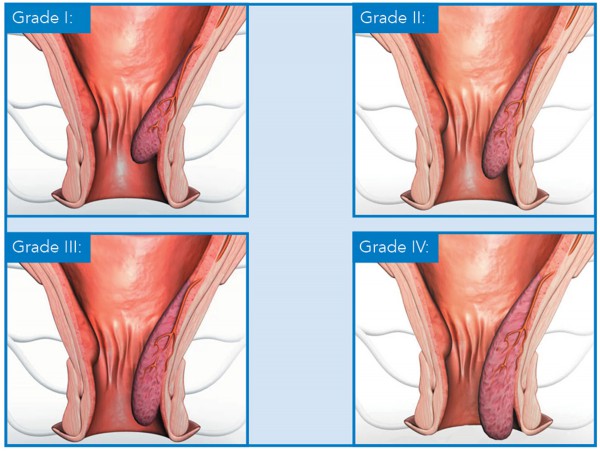Why do people get haemorrhoids?
Many factors may cause haemorrhoids to enlarge and the exact reason is not always obvious for every patient. However, there is no doubt that:
Four different grades
These anal cushions are normally held safely in place in the sphincter region by muscles and tissue. If too much pressure is exerted on them, the system of securing them may be damaged and the cushions will swell. When they protrude outside the anus, they are reffered to as prolapsing haemorrhoids. The enlarged cushions are classified into four grades, depending on their size and severity:

Grade I: Slightly enlarged haemorrhoidal cushions.
Grade II: Enlarged cushions which protrude with pressing but retract again themselves.
Grade III: Much larger haemorrhoidal cushions which require manual repositioning in the anal canal.
Grade IV: Extremely large cushions with permanent protrusion.
What are the symptoms?
Haemorrhoids can often be quite painless and may even go virtually unnoticed by the person affected. Other sufferers may experience any or all of the following symptoms:
- Bleeding during bowel movements. Usually in the form of bright red blood on the toilet paper.
- Swelling protruding from the anus. In some cases, the haemorrhoids might feel like small lumps in the anus and project from the back passage only after straining on the toilet; in severe cases, the swellings will be constantly visible.
- Haemorrhoids can cause skin irritation and intense itching.
- In isolated instances haemorrhoids may cause dull pain.

